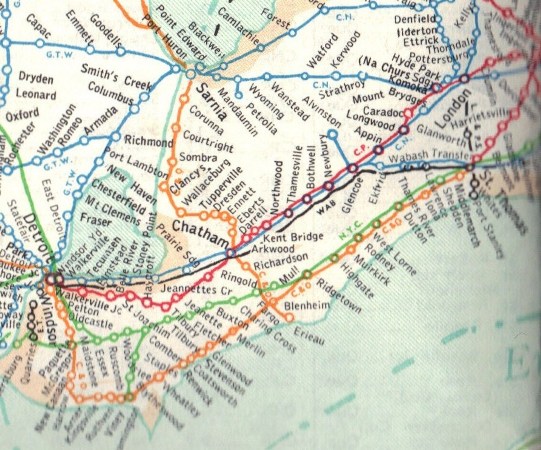
| WWT Shows | CLICK TO: Join and Support Internet Horology Club 185™ | IHC185™ Forums |

|
• Check Out Our... • • TWO Book Offer! • |
Welcome Aboard IHC185™  Internet Horology Club 185
Internet Horology Club 185  IHC185™ Discussion Site Main Page
IHC185™ Discussion Site Main Page  Our Exclusive "Timekeepers Photo Gallery"
Our Exclusive "Timekeepers Photo Gallery"  IHC185™ "Timekeepers Photo Gallery"
IHC185™ "Timekeepers Photo Gallery"  CANADIAN Private-Label Watches
CANADIAN Private-Label Watches
 Internet Horology Club 185
Internet Horology Club 185  IHC185™ Discussion Site Main Page
IHC185™ Discussion Site Main Page  Our Exclusive "Timekeepers Photo Gallery"
Our Exclusive "Timekeepers Photo Gallery"  IHC185™ "Timekeepers Photo Gallery"
IHC185™ "Timekeepers Photo Gallery"  CANADIAN Private-Label Watches
CANADIAN Private-Label WatchesRelated Content: Larry Buchan's ..."Tales from the Rails"
Go  | New Topic  | Find-Or-Search  | Notify  | Tools  | Reply to Post  |  |
| IHC Vice President Pitfalls Moderator IHC Life Member |
Illinois Model 6 full-plate movement marked "Ward's Special"  | |||
| Railway Historian IHC Life Member Site Moderator |
Postcard view GTR station at London, Ontario | |||
| Railway Historian IHC Life Member Site Moderator |
Postcard view of CPR station London, Ontario | |||
| Railway Historian IHC Life Member Site Moderator |
Postcard view of GTR railway station Sarnia, Ontario 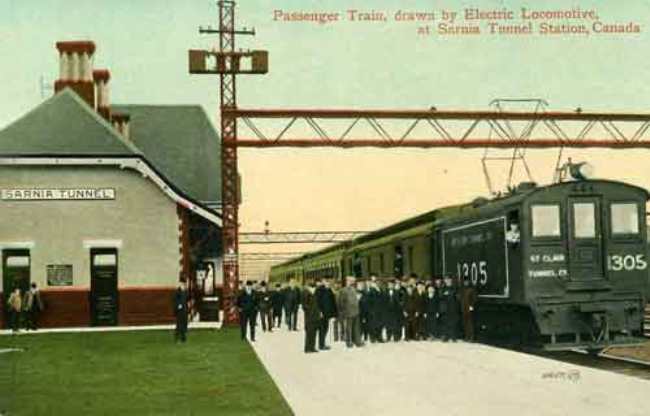 | |||
| Railway Historian IHC Life Member Site Moderator |
Postcard view of St. Clair tunnel, at Sarnia, Ontario | |||
| Railway Historian IHC Life Member Site Moderator |
St. Clair tunnel between Sarnia, Ontario, and Port Huron, Michigan with electric locomotive 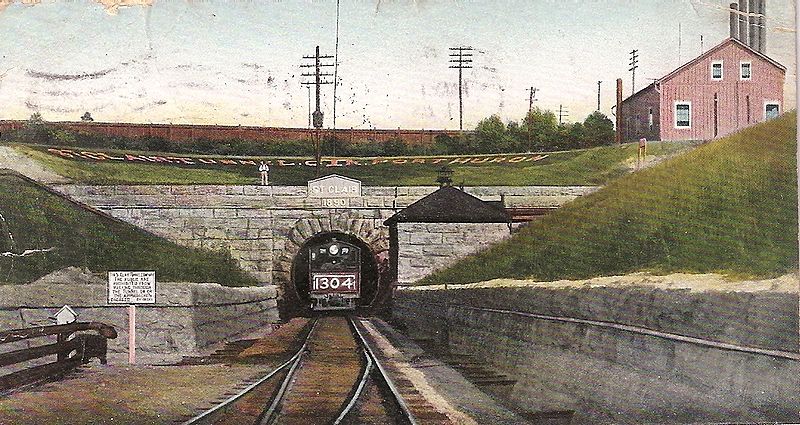 | |||
| Railway Historian IHC Life Member Site Moderator |
Postcard view of portal St. Clair tunnel Sarnia, Ontario 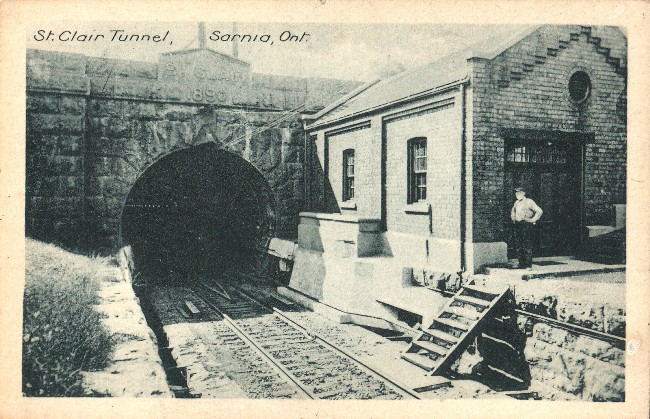 | |||
| Railway Historian IHC Life Member Site Moderator |
Hamilton 16 size, 17 jewel, Grade 974 Serial No. 701075, open face, lever set, Hamilton Watch Co. ledgers show the date finished September 16, 1907 and the date sold June 4, 1908 to the Montréal Watch Case Co. of Montréal, Québec. Re-Cased in a Keystone screw back and bezel Nickeloid case. Single sunk private-label 24-hour dial marked "R.E. Hunter, Hamiota, (Manitoba) 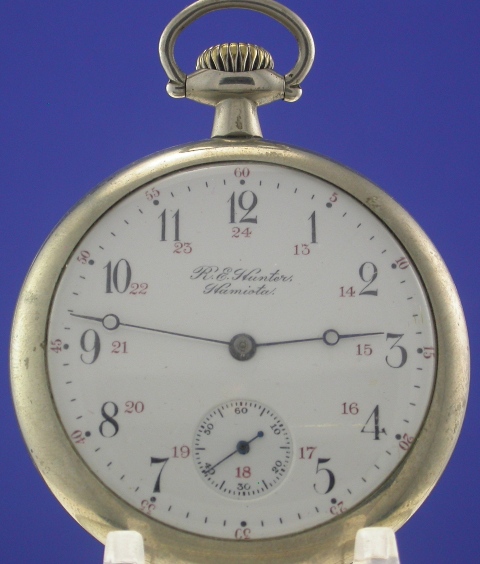 | |||
| Railway Historian IHC Life Member Site Moderator |
Dial private-label signature close-up. 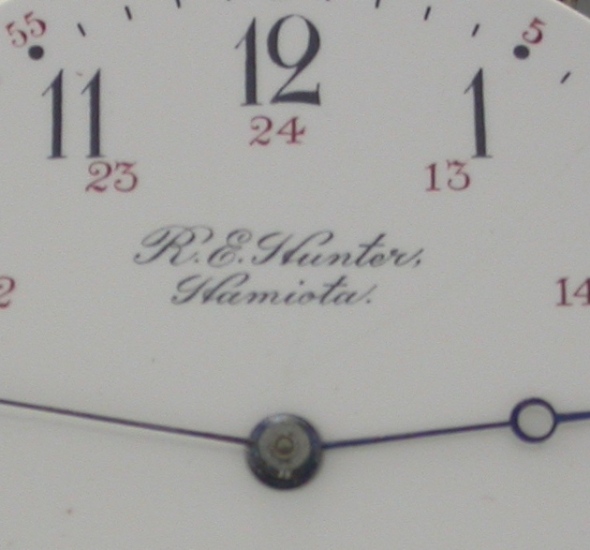 | |||
| Railway Historian IHC Life Member Site Moderator |
Movement and case frame, winding crown, and bow.  | |||
| Railway Historian IHC Life Member Site Moderator |
Hamilton movement close-up. 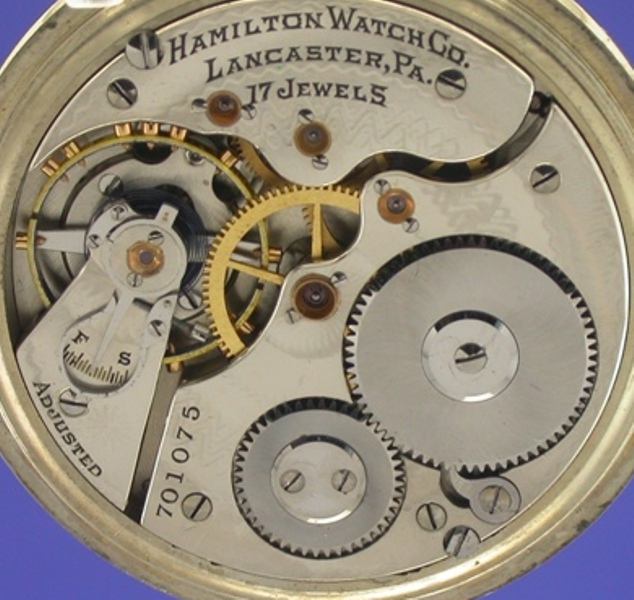 | |||
| Railway Historian IHC Life Member Site Moderator |
Western Railway Lines map showing Hamiota, Manitoba it is located on the left-hand side of the map in the middle, you can see the larger community of Brandon, Manitoba, and if you follow the red CPR line North three stations above, Brandon is Varcoe, and going West five stations you find Hamiota 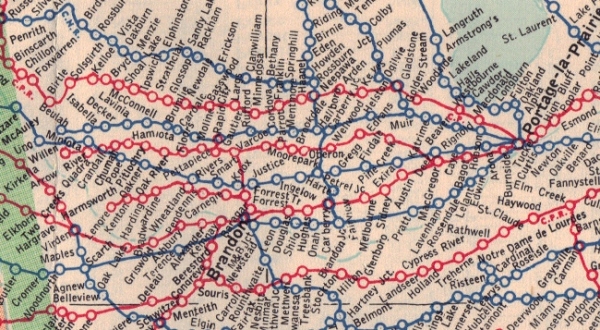 | |||
| Railway Historian IHC Life Member Site Moderator |
Hamiota, Manitoba is located on the CPR branch line built from Brandon to Arrow Lake, Manitoba in 1883, known originally as the rural municipality of Oak River, it was renamed on June 28, 1895 to avoid confusion with the rural municipality of Ochre River. Hamiota Pioneer Club Museum situated in the Municipal Park on the East side of 7th Street South. They have acquired the former MacConnell CN railway station built in 1909 on the Halboro-Beulah branch of the railway, you can see MacConnell on the Western Lines Railway map. It is on the CN blueline above Hamiota source of information Local History Book Hamiota: Grains of the Century. Postcard view of CPR Hamiota railway station vignette with harvesting and threshing seems along the top border, buildings on the side, and cattle and horses along the bottom, courtesy of Ken H Smith, President Hamiot and District Archives, and Hamiota Pioneer Club Museum. 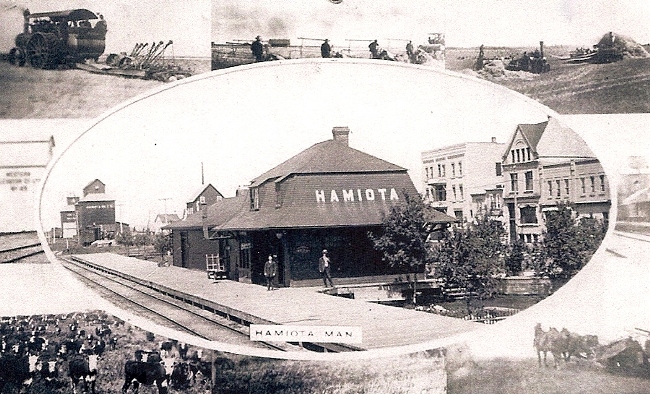 | |||
| Railway Historian IHC Life Member Site Moderator |
Photo of RE Hunter from Businessman of Hamiota, Manitoba 1908. 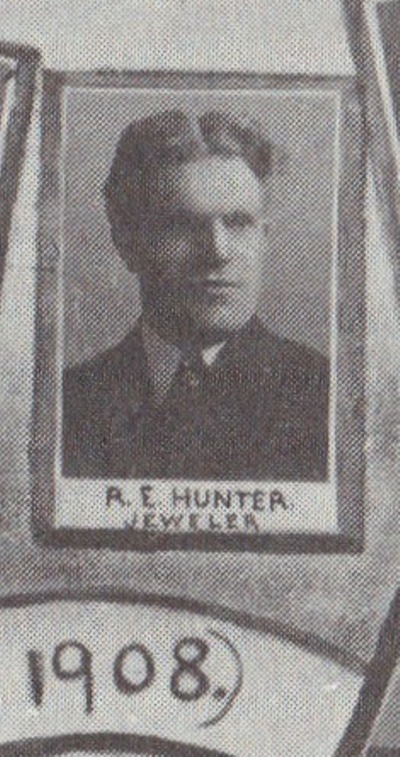 | |||
| Railway Historian IHC Life Member Site Moderator |
Photo of dial and setting lever  | |||
| IHC Vice President Pitfalls Moderator IHC Life Member |
T. Eaton, Toronto, Ontario . . . Here's an interesting 18-size 23-jewel PL watch made by Waltham for T. Eaton of Toronto, apparently in conjunction with Gallet & Co. The high-grade, 23-jewel 6-positions movement looks like a customized Model 1892, but does not have a Waltham movement number on it. The Gallet number on it does fit with other Eaton watches I have seen though. Anyway, I thought the Interocean marking was cool. 18-Size 23-Jewel Eaton-Gallet Interocean  | |||
| IHC Vice President Pitfalls Moderator IHC Life Member |
Here's the Dial with the Eaton Diamond-E Logo 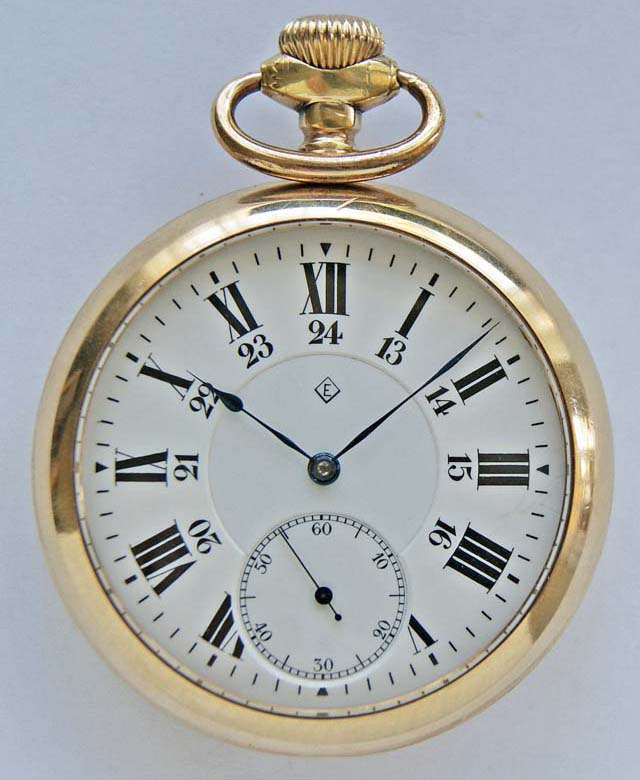 | |||
| Railway Historian IHC Life Member Site Moderator |
Nice pocket watch Edward, I have always admired these high-grade Swiss imports that Timothy Eaton ordered for his department stores in Canada. The jewels really catch your eye, along with the find finish, and unique regulator. Larry | |||
| Railway Historian IHC Life Member Site Moderator |
The Canadian Northern Railway began from independent branch lines that were constructed in Manitoba in response to the monopoly of the Canadian Pacific Railway many of these branch lines were built with the sponsorship of the provincial government, which sought to subsidize local competition to the federally subsidized CPR, there was another factor provided by the encroaching Northern Pacific Railway from across the border in the south. Two of the branch line contractors, William MacKenzie and Donald Mann took control of the bankrupt Lake Manitoba Railway and Canal Company in 1896, and by 1897 they were building further north into Manitoba's Interlake district as well as east and west of Winnipeg, they were also building and buying lines south to connect to the US border at Pembina, North Dakota, and east to Ontario. The Canadian Northern Railway was established in 1899, and all railway companies owned by MacKenzie and Mann (primarily in Manitoba) were consolidated into the new entity, with its headquarters in Toronto, Ontario. CNoR's first step toward completing directly with the CPR came at the start of the 20th century with the decision to build a line linking the Prairie Provinces with Lake Superior at the harbor in Port Arthur , which would permit the shipping of western grain to European markets as well as the transport of eastern Canadian goods to the West. In the years that followed MacKenzie and Mann were busy expanding their prairie branch line network to feed the connection to Port Arthur, while approached by the federal government and the Grand Trunk Railway to go together with them to form a second transcontinental railway, their efforts were spurned and MacKenzie and Mann decided to go it alone, and the federal government would go on to form a system composed of the Grand Trunk Pacific Railway and the National Transcontinental Railway. MacKenzie and Mann began significant expansion outside of the prairies, with the purchase of Great Lakes steamships, railways into northern Québec's Saguenay region and the acquisition of branch lines in southwestern Nova Scotia, other acquisitions were in southern Ontario and a connecting line was built from Toronto to Parry Sound. In 1905 the CNoR reached Edmonton, which had just been named capital of the newly formed province of Alberta. In Eastern Canada in 1908, a line was built East from the connection at Capreol, Ontario on the Toronto - Parry Sound line to Ottawa and on to Montréal in 1910 a direct Toronto- Montréal was built, in 1911, federal funding was made available for construction of the line Montréal - Capreol - Port Arthur. In 1912 with GTR and CPR holding the ideal southern routes around Mount Royal to downtown Montréal. CNoR started building a double track mainline north by building the Mount Royal Tunnel under the mountain to provide service to downtown Montréal. It Western Canada, in 1910 construction was started on the line west of Edmonton through Yellowhead Pass to Vancouver and in 1911 a new townsite named Port Mann on the Fraser River was built to accommodate new car shops and from where lines would extend to Vancouver. The CNoR construction costs were relatively frugal from the 1890s to the 1900s largely by acquiring bankrupt companies, or fishing failed construction projects. But by the 1910's significant expenses were added from the construction north of Lake Superior, the Mount Royal Tunnel, and the large costs of building on "the wrong side." Of the Thompson and Fraser rivers in the mountains of British Columbia, as the CPR had built their route previously and had their trackage on the more desirable eastern side of the Fraser Canyon. The last spike of the CNoR was driven January 23, 1915 at Basque, British Columbia, but were heavily in debt from the costly construction projects, the profitable prairie branch lines did not generate enough revenue to pay off the debts and the CNoR was nationalized by the federal government on September 6, 1918, when the directors of the CNoR including Mackenzie and Mann resigned.Photo of Canadian Northern Railway box cab electric locomotive leaving Mount Royal tunnel in Montréal, Québec. 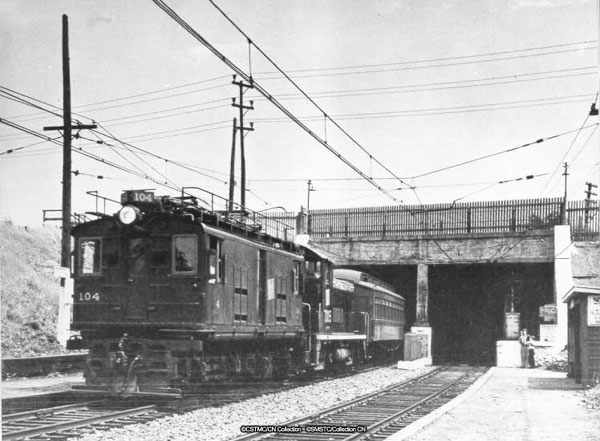 | |||
| Railway Historian IHC Life Member Site Moderator |
Last run of Canadian Northern Railway General Electric box locomotives that went in service in 1918, as Canadian Northern were late arriving into Montréal, the CPR and GTR had previously taken all the accessible entry to the South, so Canadian Northern built an exclusive residential district called Mount Royal 2 miles to the north and drilled a tunnel to enter the city of Montréal, which were serviced by electric locomotives starting in 1912. This photo shows the last run on July 6, 1995 at this time they were the oldest operating electric locomotives on the North American continent although they were being run by Canadian National Railways at the time they were repainted in their original Canadian Northern paint livery for the occasion. I had a chance to see them and operation when I visited Montréal, Québec in the summer of 1978, they were 60 years old then and carried on providing reliable commuter service for another 17 years. 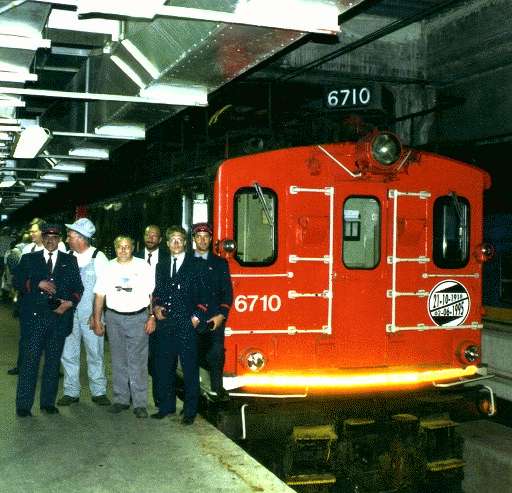 | |||
| IHC Member 1541 |
Here is my South Bend #347 Canadian Northern Special | |||
| Powered by Social Strata | Page 1 ... 36 37 38 39 40 41 42 ... 52 |
| Your request is being processed... |
|
©2002-2025 Internet Horology Club 185™ - Lindell V. Riddle President - All Rights Reserved Worldwide


